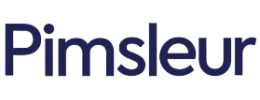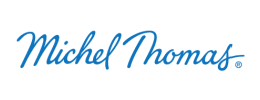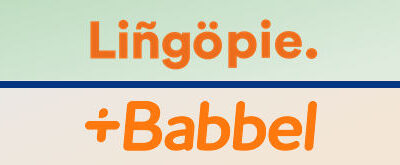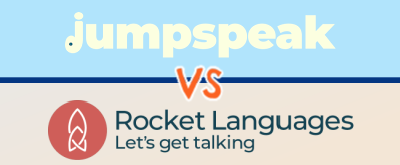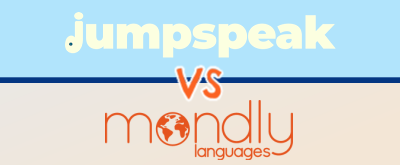Although Michel Thomas and Pimsleur are both well-known for their unique language learning methods, the two programs actually differ quite a bit. In this article, we explore those differences so you can easily decide which one is better suited for your needs and learning preferences.
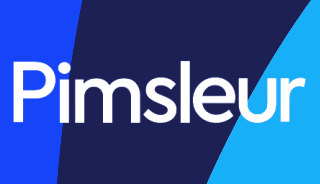
Free 7-Day Trial
Sign Up Today
|
$20/mo |
Pimsleur offers in-depth audio lessons, a diverse mix of practice drills, and top-notch speech software. Their program overall is much more comprehensive than Michel Thomas. |
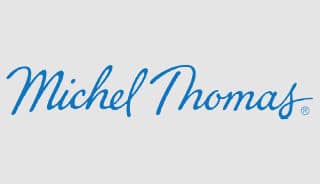
Free Lesson
Applied In Cart
|
$50-$275 |
Popular language program that teaches through the perspective of a tutor, though their curriculum overall falls short in comparison to Pimsleur. |
Editor’s Choice
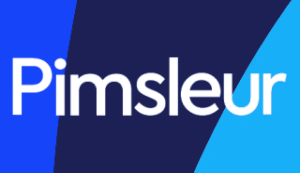
Pimsleur
- 50+ Languages
- Money Back Guarantee
Pros
- More affordable than Michel Thomas
- Effective learning method based on immersive conversations and interval recall
- Engaging audio lessons that hold your attention
- Voice Coach tool provides feedback on your pronunciation
- Diverse mix of practice drills to help reinforce material
Cons
- Lessons are long (~45 min each)
- Limited grammar content
Video Review: Michael Thomas vs Pimsleur
In the video below, Bianca from the Guide2Fluency team compares the language learning apps from Michael Thomas and Pimsleur.
Why Pimsleur Is Better Than Michel Thomas
To kick this comparison off, let’s discuss the Pimsleur method, and why their language program is a better choice than Michel Thomas.
The Pimsleur Method
Unlike the Michel Thomas method, where you listen in on a recorded session between a teacher and students, Pimsleur puts you at the center. In each Pimsleur audio lesson, an English-speaking host guides you through a conversation in your target language.
You’ll hear fluent speakers converse, with the host pausing to explain the context and then prompting you to participate by asking questions and repeating phrases.
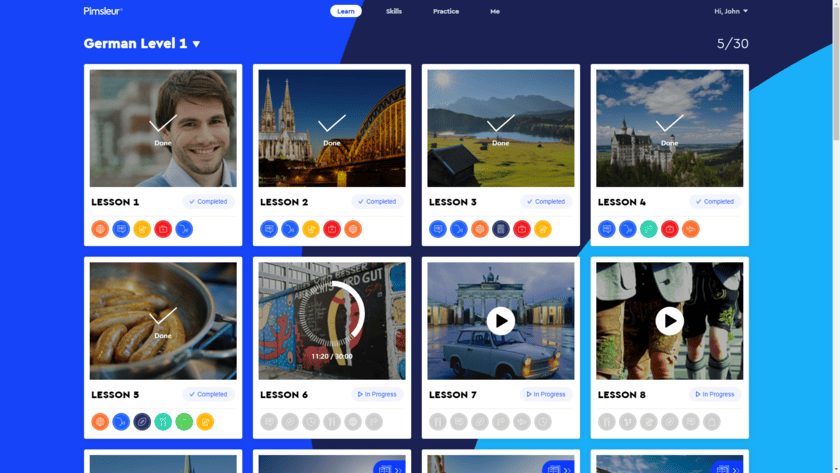
This format is consistent across all Pimsleur courses, including Pimsleur Italian, Pimsleur Spanish, and Pimsleur German. The key distinction is that Pimsleur focuses on you, the learner, rather than on two beginner students as in the Michel Thomas method.
Another significant difference is the post-lesson review in Pimsleur. After each audio lesson, you reinforce what you’ve learned through various drills and exercises, such as digital flashcards, quizzes, pronunciation practice, and speed games. This review aspect is absent in the Michel Thomas program.
More Engaging Audio Lessons
In my view, the Pimsleur audio lessons surpass those of Michel Thomas. They feel more comprehensive and engaging to me (similar to the Rocket German language program).
Pimsleur does an excellent job of keeping you engaged, whereas Michel Thomas can become dull and repetitive at times. I’m not particularly fond of how Michel Thomas lessons are structured to place you in someone else’s shoes.
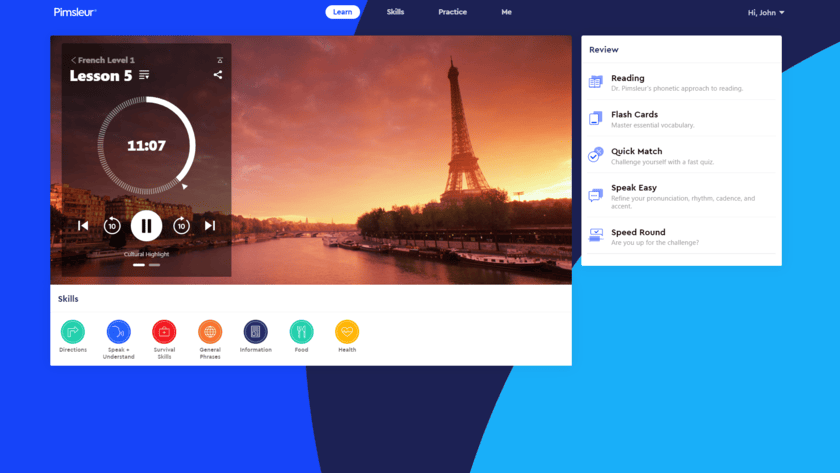
It feels more like listening to recorded tutoring sessions after the fact. I prefer Pimsleur’s format, where the lessons are tailored specifically to the learner.
Moreover, Michel Thomas relies heavily on English. While some English direction and translation can be helpful, Michel Thomas overdoes it. The English-speaking teacher dominates well over half of each lesson, whereas with Pimsleur, the moderator is mainly there to guide you.
Overall, if I had to choose between the audio lessons of both companies, I’d choose Pimsleur every time.
Diverse Practice Drills
Another advantage is that Pimsleur courses are more comprehensive and well-rounded compared to Michel Thomas. While Michel Thomas focuses solely on audio lessons, Pimsleur takes the learning process further.
After each Pimsleur audio lesson, you’re encouraged to complete a variety of practice drills involving reading, writing, speaking, and listening. These drills help reinforce what you’ve learned during the audio portion, similar to the drills with Babbel or Duolingo.
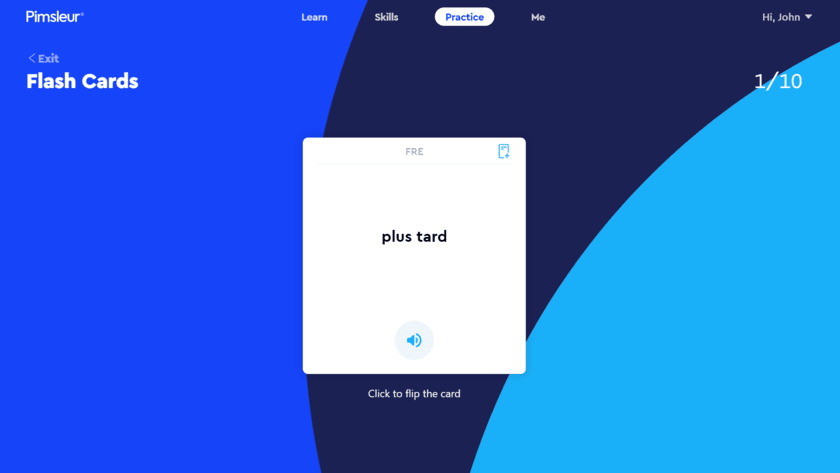
Not only do these drills make Pimsleur courses more effective in my opinion, but they also make the learning process more enjoyable. I commend Pimsleur for going the extra mile in this regard.
The Pimsleur Voice Coach
Another point to consider is that Pimsleur incorporates speech recognition technology, which Michel Thomas lacks. This new feature in Pimsleur, called Voice Coach, offers instant feedback on your pronunciation during drills and exercises (like Babbel).
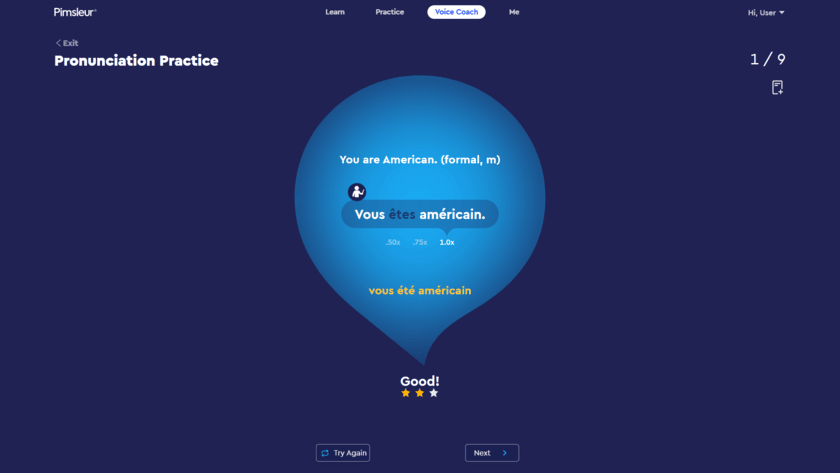
While not flawless (as no speech recognition technology is), it’s still incredibly useful, especially when compared to Michel Thomas, which offers no feedback on pronunciation.
With Michel Thomas, you’re essentially left to determine on your own whether you’re pronouncing words and phrases correctly. Therefore, this is another clear advantage for Pimsleur.
Better Digital Experience
Lastly, I find that Pimsleur offers a superior digital learning experience. As mentioned earlier, Michel Thomas programs are solely audio-based, lacking special features or dashboards to aid organization, track progress, or visually represent completion.
In contrast, Pimsleur excels in this regard. Their digital platform, available on both desktop and mobile app, is outstanding. It’s modern, sleek, and extremely user-friendly. Pimsleur makes navigating audio lessons effortless; you can pause at any time to practice what you’ve learned, track the skills you’ve acquired, and, most importantly, monitor your progress and streaks.
From a user experience perspective, Pimsleur surpasses Michel Thomas by a wide margin.
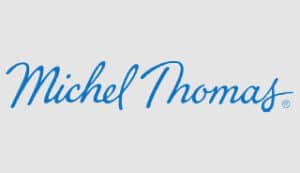
Michel Thomas
- 15+ Languages
- Lifetime Access
Pros
- Effective learning method from the perspective of a tutor
- Short, easy-to-complete lessons
- Lesson format great fit for auditory learners
- Listen to lessons on-the-go
Cons
- No supplemental practice drills or exercises
- No voice recognition software for feedback
- Lessons overall not as comprehensive as Pimsleur’s
Why Michel Thomas Is Better Than Pimsleur
Now that you have a good idea of what Pimsleur has to offer, let’s turn the tables and discuss the Michel Thomas method, and the major reasons you should consider using their program to learn a new language.
The Michel Thomas Method
In each Michel Thomas lesson, you listen to a conversation between a teacher and two beginner students. The teacher introduces new words, phrases, and concepts, then prompts the students to participate by asking questions.
It’s akin to a pre-recorded tutoring session. As the students respond, you hear their answers and the corresponding feedback from the instructor.
Essentially, the lessons are structured for you to assume the role of one of the beginner students. You can pause the audio to formulate your response to the teacher’s questions, learning from your mistakes along with the students in the lesson.
However, it’s important to note that Michel Thomas lessons are audio-only. There are no videos, writing exercises, reinforcement drills, or similar materials following the lessons.
Short Lesson Format
One advantage of Michel Thomas is that their lessons are shorter compared to Pimsleur, typically taking just 10 to 15 minutes to complete.
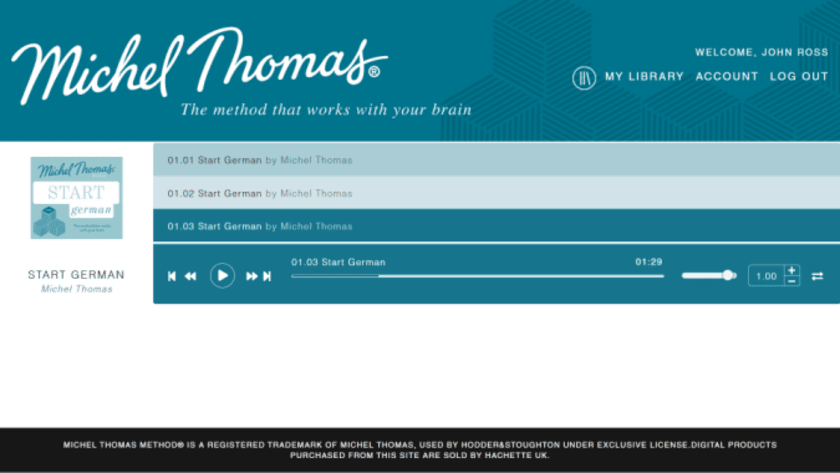
This design choice is intentional. The course aims to eliminate any feelings of pressure or anxiety, including regarding lesson length. The Michel Thomas method is meant to keep you relaxed, positive, and steadily advancing (similar to Babbel and Mondly).
Therefore, if you’re easily frustrated or lead a busy life with limited time for language learning, Michel Thomas programs might be a better fit.
With shorter lessons, you can easily complete them and feel a sense of continuous progress.
Grammar Instruction
Another advantage is that, despite the English-speaking teachers in Michel Thomas lessons talking excessively in my opinion, they excel at breaking down grammar into easily understandable chunks.
They avoid overwhelming learners with overly detailed or complex explanations. For instance, instead of delivering a lengthy discourse on verb conjugation, the teacher quickly defines a verb form and then demonstrates its use in a sentence.
It’s a swift and painless process. They provide brief context before diving into an example. I must commend Michel Thomas for making grammar easily digestible.
Language Tutoring Perspective
While I have a personal preference for the Pimsleur approach, which centers the lessons around you as the learner, there are merits to the Michel Thomas method of having you listen in on other learners.
Firstly, it alleviates pressure since you can essentially eavesdrop and don’t feel put on the spot. Additionally, the lessons tend to feel more personalized.
Due to the sessions featuring an instructor working with just two students, they have a very intimate feel. They don’t have the more general approach of teaching to a larger audience.
Verdict: Which Language Program Is More Effective?
After using and testing both programs, I believe the difference is clear: Pimsleur is the clear winner in my opinion.
Honestly, I wasn’t very impressed with the Michel Thomas method. Despite the hype surrounding it, I found it underwhelming. There are at least six or seven other language apps and programs that I would recommend before Michel Thomas, with Pimsleur being one of the top choices.
I genuinely enjoy the Pimsleur language programs. With their interactive audio lessons, diverse reinforcement drills, and excellent mobile app, I think Pimsleur surpasses Michel Thomas in language learning.
➡️Read Next: Pimsleur vs Rocket Languages
Pimsleur’s approach centers on the learner, with structured audio lessons followed by comprehensive practice drills and a strong focus on pronunciation through their Voice Coach feature. In contrast, Michel Thomas lessons involve listening to a teacher and two students, aiming for a more relaxed, pressure-free environment, but lacking in interactive features and post-lesson reinforcement.
Pimsleur’s comprehensive approach includes interactive audio lessons, diverse practice drills, and a focus on pronunciation through its Voice Coach feature, offering a more immersive and effective learning experience. In comparison, Michel Thomas, while providing shorter, more relaxed lessons, lacks interactive elements and comprehensive post-lesson reinforcement, making Pimsleur a superior choice for learning a new language.

